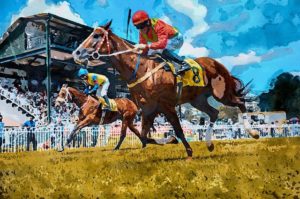Which current jockey has ridden the most winners at the Cheltenham Festival?
Following the retirement of Richard Johnson on April 3, 2021, the current jockey who has ridden the most winners at the Cheltenham Festival is David ‘Davy’ Russell. Russell has, like Johnson, ridden 22 winners, a total exceeded only by countrymen Ruby Walsh, Barry Geraghty, A.P. McCoy and Pat Taaffe.
Russell, 42, spent nearly a year on the sidelines as the result of serious vertebrae injury sustained in a fall from Doctor Duffy in the Munster National at Limerick in October, 2020, and missed the 2021 Cheltenham Festival on medical advice. At the time of writing, he has yet to resume race riding, but has been riding out for Gordon Elliott and is reportedly ready to return when called upon to do so.
Russell rode his first Cheltenham winner, Native Jack, in what is now the Glenfarclas Cross Country Chase in 2006. Thereafter, with the exception of 2019, he rode at least one winner at every Cheltenham Festival up to, and including, 2020. At the 2014 Cheltenham Festival, Russell rode three winners for the first time, including Lord Windermere in the Cheltenham Gold Cup. He bettered that total in 2014 and his four winners – Presenting Percy in the RSA Novices’ Chase, Balko Des Flos in the Ryanair Chase, Delta Work in the Pertemps Final and The Storyteller in the Brown Advisory & Merriebelle Stable Plate – were sufficient to win him the leading jockey award for the one and only time.
 Apprentice jockeys, in Flat racing, and conditional jockeys, in National Hunt racing, are jockeys aged between 16 and 25 years of age, who have ridden a limited number of winners. To compensate for their lack of experience, in some, but not all, races, they can claim a weight allowance when riding against fully licensed professionals.
Apprentice jockeys, in Flat racing, and conditional jockeys, in National Hunt racing, are jockeys aged between 16 and 25 years of age, who have ridden a limited number of winners. To compensate for their lack of experience, in some, but not all, races, they can claim a weight allowance when riding against fully licensed professionals.